12 April 2017
With hundreds of brands and companies competing to differentiate themselves, corporations have been branching out to new and unconventional ways to make themselves known. This was evident at the recent April Fool’s holiday where brands would ‘prank’ their target audience to garner attention.
While certain brands would prefer to maintain their white shining armor, brands such as Ikea, Google and many others have ventured into dangerous waters (of unhappy consumers and journalists) and successfully conveyed their desired message. But was it worth the risk?
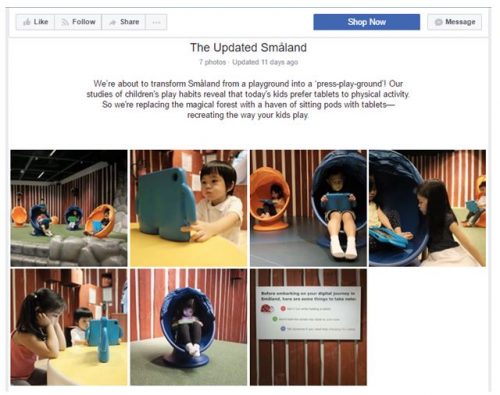
Yes, it was worth the risk
First and foremost, put yourself in editors and journalists’ point of view and imagine this. Aside from the tight editorial deadlines, readers to please, stakeholders to support and advertiser relations to maintain, members of media receive hundreds of emails a day, filled with press releases, event invitations and many others.
Within the ‘haystack’ of email pitches, editors are tasked to pick out ‘needles’ which stood out and relevant to their publication/audience (on a daily basis!). While relevancy might not be a hard thing to achieve, making your story stand out is another story. Nowadays, editors would most likely choose not to publish news that is relevant to their audience because there are so many other more interesting and relevant materials.
An interview conducted by a Buzzsumo contributor asked various editors and journalist what were some of their pet peeves that makes them delete an email pitch:
Anthony Ha – TechCrunch
Pitches that are impossible to understand because they consist primarily of buzzwords, or that obscure the actual news in a long introduction stretching to connect the company to news that’s more exciting. Also, there seems to be an uptick in “we’ve given the exclusive to another publication but we’ll let you publish 30 minutes later” pitches, and I HATE those.
Caitlin Kelly – NY Times
99.9% of the emails I get are useless! That’s a pretty damning statistic, I’d say.
Generic — you have clearly sent this email to 100s of other writers. I’m not there for that.
Boring. No news or not enough news to make this appealing to any editor I know.
Not enough detail.
No color…just bland, boring PR talk.
No context; why now, why me, why this matters today and not 6 months from now…?
NO understanding that the only way to get my attention is to HELP me.
Throwing random emails at me is deeply annoying, rude and sucks up my time. No freelancer has extra time to re-focus their attention on your need for a hit by wading through yet another crappy email (see numbers 1-5.) The PR people who are truly helpful and will get their client’s mention are those who ask me what I need and help me get it, fast.
The only way to really work with me….and NO one bothers. Get to know me! Ask for a few minutes of my time, let’s schedule them, and then find out the various markets I’m currently pitching to; the kinds of stories I need and let’s see if there is a fit. I am appalled by how lazy PR people are and completely fed up with the BS they keep sending me.
I need ideas, every single day. I do need pitches! But not random stuff.
The article was published since 2014, however the issues mentioned still persists today. So how do we get their attention? There are many ways to execute this, but today I would like to share a case study of how a brand can utilize an unconventional media initiative in conjunction with a conventional ‘holiday’.
Creating Unconventional Content for Conventional Holidays
It all began late 2016, when members of media took notice of Amazon’s increase in hiring and warehouses being set up in Singapore. Online consumers were ecstatic when TechCrunch reported that the Seattle company is set to enter SEA with a Singapore launch in Q1 2017. By the end of March 2017, consumers were disappointed as TechCrunch published a follow up article on 22 March that Amazon had to delay its launch into Singapore.
Added with hype built up by media across Southeast Asia (SEA), this became a perfect stage for an Amazon-Themed April Fool’s prank. iPrice, a Southeast Asian price comparison website took this up with an ‘exclusive announcement’ that Amazon was entering the region. Though there was almost no truth in the announcement, various media picked up the news due to the timeliness of the announcement.
Rationale for the initiative
More than just a standard April Fool’s prank, the initiative was coherent with their company’s mission statement:
To bring a greater level of transparency, convenience and trust to the e-commerce market in Southeast Asia by making it easy for shoppers to compare prices, discover products and get the best deals from thousands of online shops.
And their Key Pillars:
To seamlessly connect shoppers with our partners across Southeast Asia, in providing the widest selection of products in the most secure and cost efficient manner possible.

With the mission statement and key pillars as the foundation of the initiative, key messages (though indirect in the initial announcement) the price comparison website aimed to convey was:
- iPrice welcomes the entry of Amazon into the region as it would positively benefit the ecommerce industry in Singapore and the rest of the region
- Aim of the initiative was not to deceive audiences but rather a creative visualization of Amazon in Southeast Asia and April Fool’s day was the most suitable holiday for us to share this visualization.
- To position iPrice Group as a forward thinking, innovative, creative and fun startup.
With localized content and humor, iPrice created the following screenshots and disseminated it to members of media. Click here to view their press announcements: Malaysia, Singapore, Indonesia, Vietnam, Thailand and The Philippines.
Singapore (Homepage)
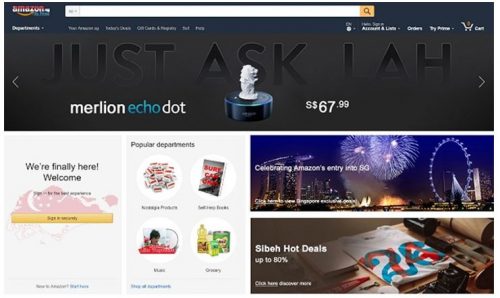
Indonesia (Homepage)
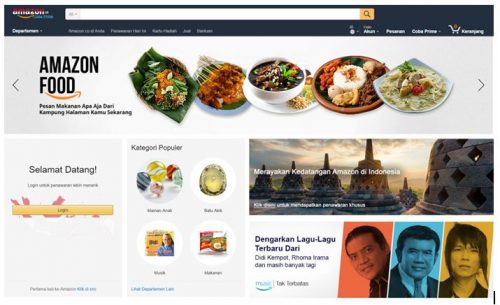
Malaysia (Homepage)
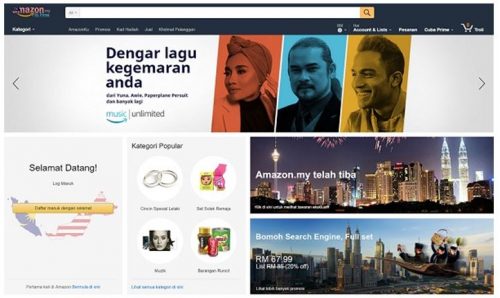
Vietnam (Homepage)
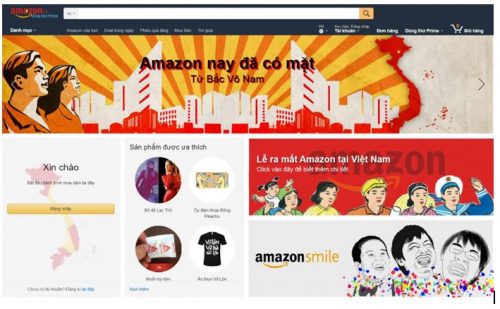
Singapore (Product Page)
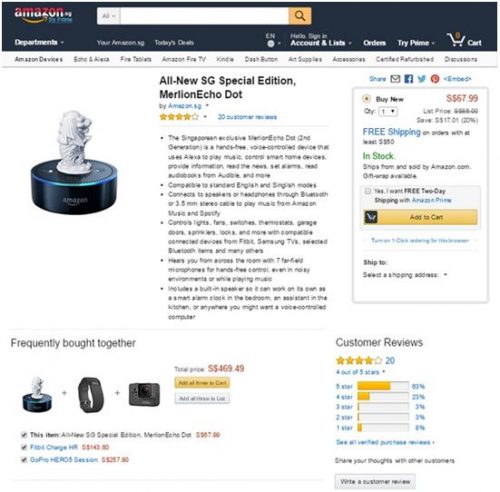
The Outcome
The price comparison website received hundreds of publications within and beyond Southeast Asia such as South China Morning Post, Channel News Asia, Tech in Asia Indonesia, TechSeen, Marketing Magazine and many other authoritative mediums. Type amazon “iprice” in Google’s News tab and you’ll see a number of publications covering the initiative.
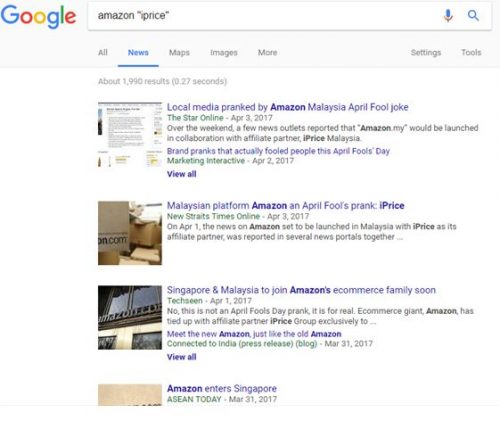
Not to mention that the initiative garnered the attention of The Star and New Straits Times where they interviewed a spokesperson from iPrice for a follow up story.
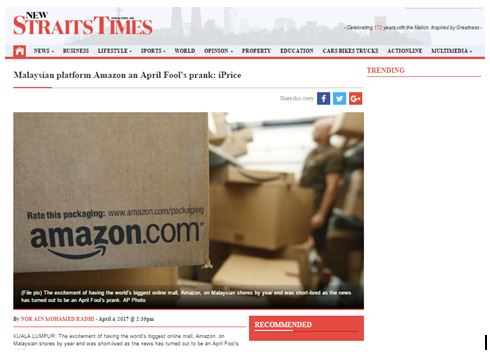
Using Buzzsumo’s Content Research, the April Fool’s initiative garnered more than 8.3k social media shares just within 4 days in Malaysia. In the following days, the e-commerce received thousands more social media engagements across social media channels such as Facebook, Twitter and LinkedIn across the region.
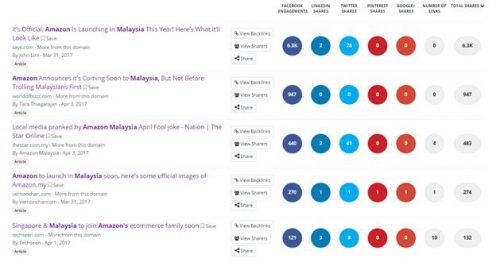
Conclusion
An important key learning was that relevancy and creativity is fuel to virality. Brands and agencies who has tried to create viral content that isn’t endearing has never been successful. As seen in the screenshot and press announcements, iPrice was able to garner a large span of attention within a short period of time as they created content which mattered to consumers.
Timeliness and context was an important factor as well. However, this was not without risks. Certain groups of consumers and members of media was not satisfied with the ‘fake news’ produced by iPrice. A key learning from this was to never send such materials to publications who does not have a history of covering lifestyle topics, April Fool’s content or non-serious content.
Most importantly, above all else, companies who are looking to create ‘out of the box’ content must first question themselves how this can help achieve their internal goals and communicate their desired message to a wider range of audience. Once all these boxes are checked and when your company is willing to take a risk, go for it and you might be surprised what you could achieve.
Like what you see? Have a better case study to show how an ‘out of the box’ media initiative can be successful? Share with me in the comments!













